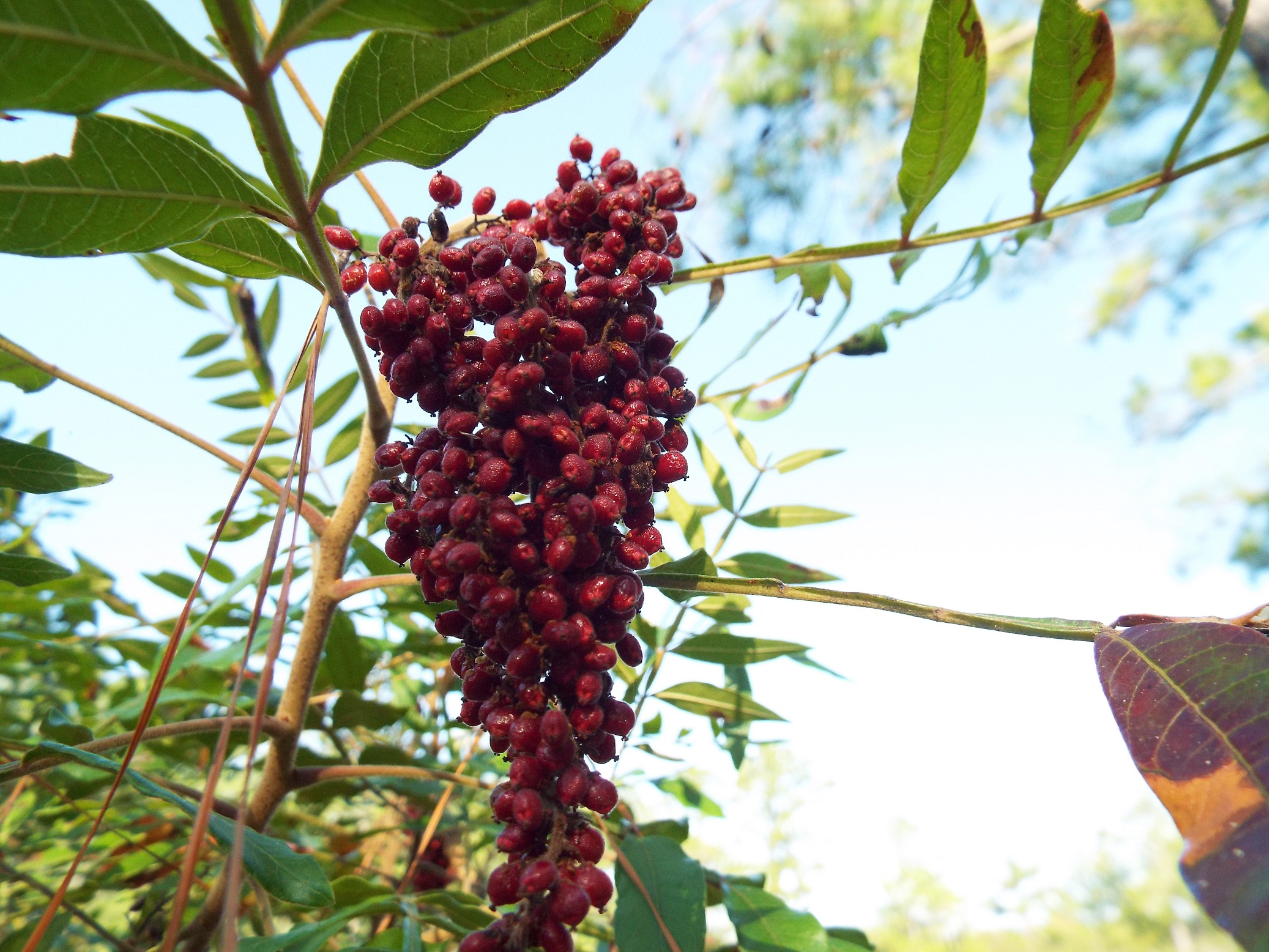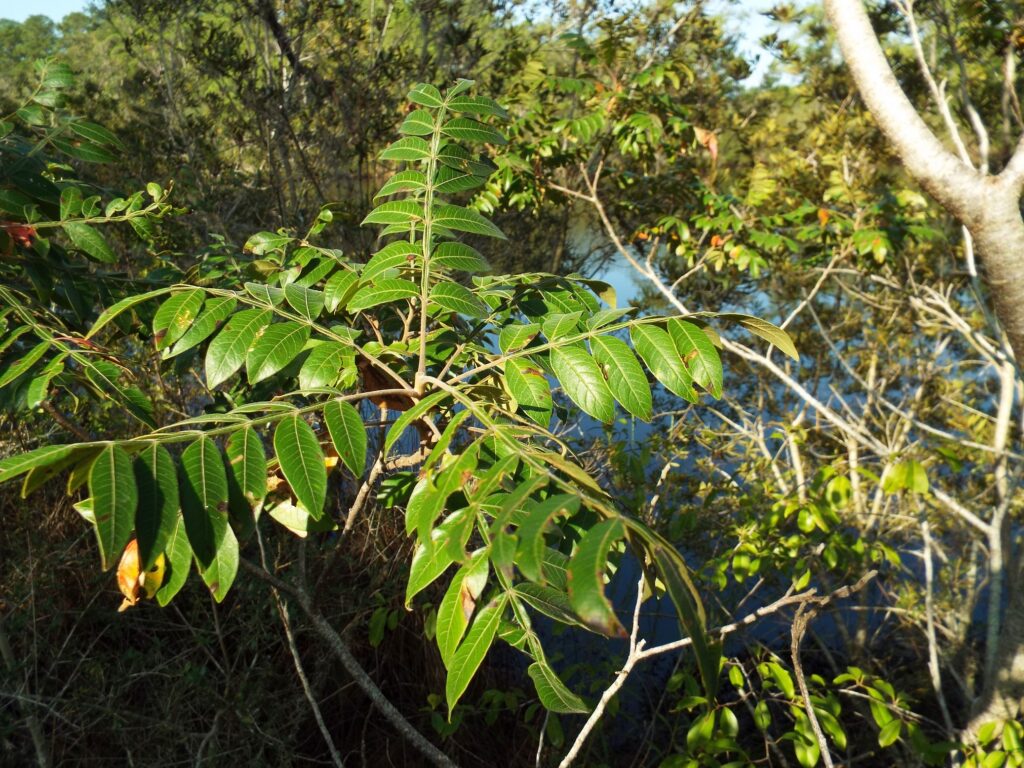

This week for Flora and Fauna Friday is a simple spindly shrub of scrublands and shaded woods, Winged Sumac (Rhus copallinum).
Winged Sumac, AKA Shining or Flameleaf Sumac, is a large woody shrub, bordering on small tree, that can be found throughout South Carolina and the Eastern United States. It can grow in just about any soil regardless of fertility, tolerates both infrequent flooding and periodic drought, and will grow fine in both partial shade and full sun. It can reach fifteen feet in height but most often hovers around ten feet. Its growth is multi-stemmed with several irregularly shaped, but otherwise straight, narrow stems rising from a single point of soil. The stems grow together into a hot-air-balloon shape, a ball of foliage floating over several thin supports. Winged Sumac tends to grow into loose thickets, either by clonal creep through the roots or offspring germinating near their parents.
The leaves of Winged Sumac are how it gets three of its common names. Each leaf is large and pinnately compound with a dozen or more leaflets. These leaves are a deep green in summer with a glossy sheen, which is where they get the common name of Shining Sumac. The central vein of this compound leaf also has narrow wings between each leaflet, which is the easiest way to identify this species and the origin of the Winged Sumac name. Finally in fall, these leaves turn a brilliant scarlet-red which earned it the name of Flameleaf Sumac. Winged Sumac blooms throughout the year with easy to miss yellow-green, hand-sized flower clusters at the end of each branch. These flowers mature into small dark-red drupes. The drupes are eaten by birds fresh but will also dry on the stem and remain as a food source for songbirds throughout winter. These miniscule fruits are actually edible for humans and can easily be made into a fruit drink by steeping the crushed fresh fruits in water overnight. The fruits can also be dried for use as a cooking spice. On top of its culinary utility, Winged Sumac is a good choice for urban landscaping and as a residential ornamental due to its tolerance of a variety of growing conditions, compact size, and beautiful fall foliage.